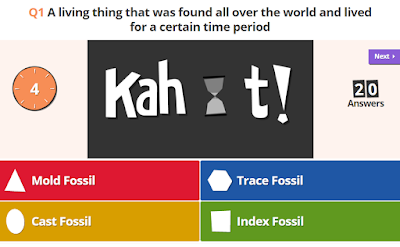The Gamification Chronicles Part 1: Kahoot
"Gamification" is transforming education. The thought of bringing games into the classroom may seem like a "step backward" for some teachers as they think of gaming and games as a distraction, but they are increasingly permeating into apps, open source software and other tutorials which can create opportunities to put a slightly different spin on traditional learning products and assessment tools. My first experience with gamification was an extension activity that I did as a math teacher years ago called "Lure of the Labyrinth" wherein students had to apply their mathematical understanding to solve puzzles and challenges by using mathematical understanding. They absolutely loved it.
Since then, "gamification" has transformed my classroom as well, and on a variety of levels and products. (Although a lot of this is due to my COETAIL instructor Robert Appino) I'm going to share some tools and also showcase some products which I think are really cool over the coming months that have elements of gaming which can make this a reality in your practice.
Enter "Kahoot"
Kahoot has been sweeping our middle school. Up till then, I used quizlet as a review tool for vocabulary and concepts, but since I've used Kahoot, my kids prefer it hands down. There are some other select response tools out there as well such as Socrative which I still use for exit interviews, but Kahoot is a bit different.
Kahoot is a platform wherein a teacher creates an account and can have a number of different of different assessment types-quiz, survey or discussion. Whence you do, you "play" your Kahoot and a game number is produced which sends students to the room via this log-on porthole.
How Does Kahoot Work?
When you are in the room, the teacher/game master dictates the pace of the game. They can click on users to boot them from the room or stop the game re-mediate instruction or provide feedback. For instance, with questions that the majority of the class got correct, we quickly moved on. However, with questions that a high percentage of students got wrong, I'll pause for a minute and clear up any misconceptions. There is an eerie game show type of music in the background which adds to the excitement. Give it a try!
Since then, "gamification" has transformed my classroom as well, and on a variety of levels and products. (Although a lot of this is due to my COETAIL instructor Robert Appino) I'm going to share some tools and also showcase some products which I think are really cool over the coming months that have elements of gaming which can make this a reality in your practice.
Enter "Kahoot"
Kahoot has been sweeping our middle school. Up till then, I used quizlet as a review tool for vocabulary and concepts, but since I've used Kahoot, my kids prefer it hands down. There are some other select response tools out there as well such as Socrative which I still use for exit interviews, but Kahoot is a bit different.
 |
| The Kahoot question screen. Students respond on their devices and points are given to correct answers and quick response. |
Kahoot is a platform wherein a teacher creates an account and can have a number of different of different assessment types-quiz, survey or discussion. Whence you do, you "play" your Kahoot and a game number is produced which sends students to the room via this log-on porthole.
How Does Kahoot Work?
When you are in the room, the teacher/game master dictates the pace of the game. They can click on users to boot them from the room or stop the game re-mediate instruction or provide feedback. For instance, with questions that the majority of the class got correct, we quickly moved on. However, with questions that a high percentage of students got wrong, I'll pause for a minute and clear up any misconceptions. There is an eerie game show type of music in the background which adds to the excitement. Give it a try!
.jpg) |
| Kids get excited when they get questions right! |


Comments
Post a Comment